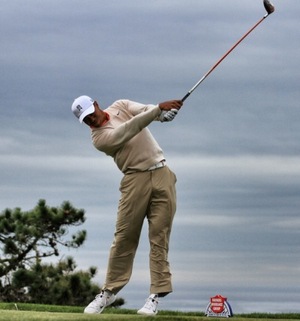"For 25 years, he’s been bringing Tiger Woods to the masses"
/Before last week’s PNC Challenge, Michael Bamberger profiled the end of NBC golf director Doug Grabert’s 25 years. It’s a name we don’t hear as often as the producers Tommy Roy and Tom Randolph, but one equally as important to that well-oiled machine.
Of particular fun is Grabert reliving the 2008 U.S. Open broadcast, for which NBC won an Emmy.
NBC had a camera on Rocco. Another on Tiger. Another on his ball. Another on the hole. Another, ground level, showing the green and the amphitheater around it. Another on a tall, high swinging arm called a jib. Go to three, go to four, go to Dog, go to jib. Grabert, every bit as focused as Woods, instructing his technical director, Mark Causey, what buttons to press, for our viewing pleasure. Bapabapabababop. Posterity would come later.
Dog was Mike Wimberly. The plumber can come back. The reporter can make another call. In live TV you’ve got one chance to get it right. That broadcast won NBC Sports an Emmy. The putt had no right to go in, it was so wobbly, and it had every right, it was struck so purely. Rocco’s face said it all: I knew he’d make it. Tiger’s face said more: This is what I live for. Grabert, too.
The USGA has posted the full final round broadcast here. And here is the portion of the telecast described in Bamberger’s piece. Spoiler, he makes it again.

















